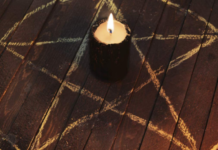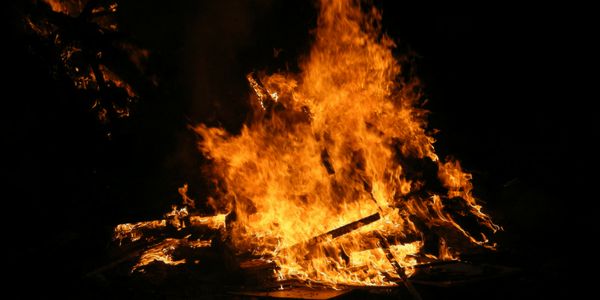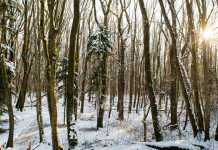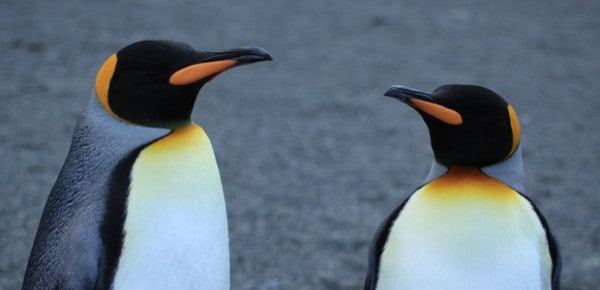
The need for a form of nature-worship I could relate to. A strong interest in social justice and inclusivity. My best friend’s gay cat. All of these things played a heavy part my interest in queer, gender non-conforming, and non-binary forms of nature. I had originally intended to include this as a small section of my article “God, Goddess, and Other: Fertility faiths and queer identities,” but I quickly realized it would take much, much more space than that to do the topic justice.
And the topic definitely deserves a lot of education and research. (In fact, the more I’ve done, the more I feel I need to do!) Humans, I think, have a tendency to assume that other creatures are like themselves unless they prove otherwise. The study of many of the animals I will discuss has been filled with misunderstanding and inaccurate information, partly from a lack of technology for many years (the ability to study DNA has exponentially increased our understanding in just the past few years, which I am very grateful for) and partly due to restrictive ideas of what “male” and “female” entail, and a lack of recognition for sexes outside that binary. This article seeks to remedy that, honour these life forms for their differences instead of glossing them over and help others find ways to incorporate them into their practice.
Before I go on…
I’d like to give a small disclaimer: This article is by no means exhaustive, and though I’ve tried to include as many perspectives as I could, I’m almost certain that there’s something I’ve missed. Also, keep in mind that some parts of this article are written from the perspective of lesbian sexuality and non-binary gender, because that is where my personal experience lies. If you think I’ve missed something important, or if your gender and sexuality give you a completely different perspective, I would love to hear about it!
Sometimes it works a little differently
Emphasis on the reproductive aspects of sexuality over the pleasurable aspects, as you may know if you read my article,1 is one of the things I find alienating about some approaches to nature worship. It seems only fitting to start with a species that separates the two entirely. The New Mexico whiptail, sometimes called the “lesbian lizard,” has only one biological sex — female. They reproduce asexually, using a process called parthenogenesis, where eggs develop without the need for fertilization. However, they still engage in courting and mating behaviours with each other, despite not needing to do so for reproduction. That resonates with me, both as a person who has a uterus and doesn’t want to bear children and as someone who views sex for pleasure just as valid as sex for reproduction.
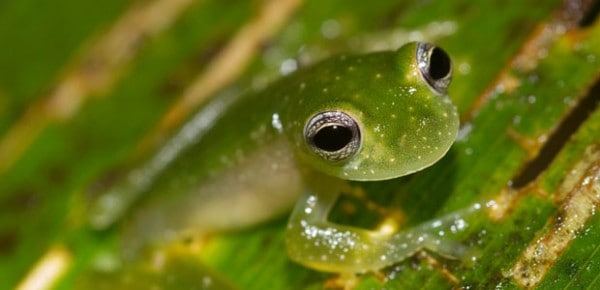
Trans people, as well as people who move between genders, might be interested in frogs. Some species have been observed changing their sex organs from female to male. (You might recall this being a plot point in Jurassic Park, where the originally all-female dinosaur population began changing to males and reproducing due to the frog genes used to fill gaps in their genetic structure.) I sometimes experience a state of being in between genders, and sometimes in between having a gender and not having one. There’s a certain degree of liminality in moving between gender states, and I relate well to amphibians in general for that reason, as well as crepuscular animals (those most active at dawn or dusk).
There are some species whose physical characteristics don’t match human definitions of their sexes, something I can see in my own life. I’ve always been more bemused than anything else by the preoccupation some faiths have with, for example, the phallus. My being a lesbian definitely influences this; in my life, a phallus isn’t some rigid, powerful symbol of masculinity, for many reasons. I know they aren’t inherently masculine, because my partner has one and she is very much a woman. On another level, a phallus is a tool, one of many, that I can put on and take off as my partner and I see fit. As a result of all this, I deeply question the penis=masculinity=strength narrative, as well as the notion that femininity is inherently passive and receptive. I chose these next two animals to research because they subvert or outright defy those notions.
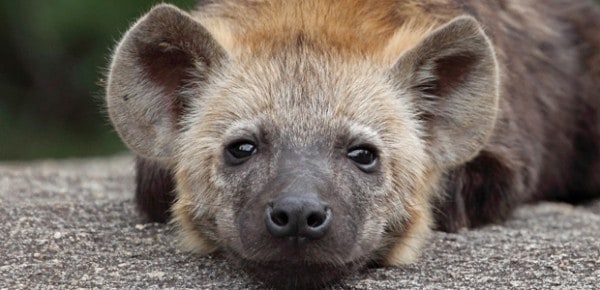
I find spotted hyenas fascinating. The females are much larger and more aggressive than the males (so much so that the highest-ranking male is lower than the lowest female, and males are even afraid of female puppies) and they have what’s known as a pseudo-penis (actually a very large and well-developed clitoris that is used for urinating, mating, and giving birth) that is larger that the males’ penis. This makes sex difficult, but has the huge added bonus of making rape impossible.2 And just to make things more interesting, an erect penis is seen as a sign of weakness in hyena-world, so males will present their erections to females to show submission, the way other pack predators show their throats.3
Seahorses take hyenas’ differences from humans to the next level. Not only do the females have a unique organ that superficially looks like a penis, but the males carry children and give birth as well. It’s like human reproduction on Opposite Day: the female has an organ called an ovipositor, which she uses to deposit her eggs into the male’s egg pouch. (Funny story from writing: Google Docs tried to change “male’s” in that last sentence to “female’s” due to the presence of “egg pouch” in the sentence. Kind of illustrates what I’m talking about, doesn’t it?) The male seahorse then fertilizes them internally and becomes pregnant, later giving birth much like humans do, sometimes to as many as 1,500 babies.
All orientations are natural
I would also like to address the notion that heterosexual, cisgendered sex is somehow more “natural” because it is believed to result in procreation, as well as the idea that diverse sexual orientations and gender identities are an exclusively human trait. In truth, there are many, many other species other than humans who have shown same-sex attraction. Wikipedia has an extensive list of them,4 and within this list, many diverse types of animals can be found, of virtually every sexual orientation exhibited by humans.
Many of the animals commonly worked with by Pagans — cats, ravens, owls, wolves, and so on — are included in this list. Xander, my best friend’s perpetually cranky orange tabby who perks up exclusively around other male cats, springs immediately to mind. Ravens mean many things to many people, but since I live in the Pacific Northwest, the first thing that comes to mind for me is their trickster aspect. A common trait of tricksters across many cultures is their tendency to subvert gender roles, so it came as little surprise to me to learn that ravens have demonstrated non-heterosexual attraction.
I ask you, readers: does knowing how widespread queer sexuality is in nature, or knowing that you animal companions could very well be queer, change your perceptions in any way?
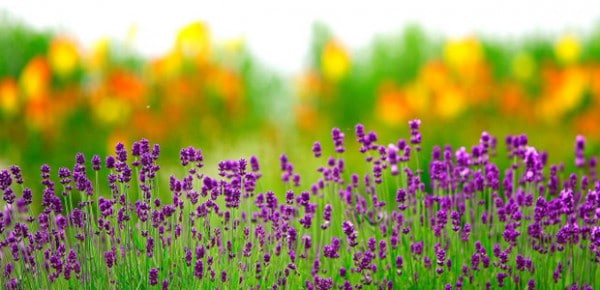
Beyond animals
Queer identities and (human) gender nonconforming behaviour doesn’t end at the animal kingdom. There is a huge amount of sexual variance in plants. In terms of reproduction, there are two main types of plant. The first are gymnosperms, who have exposed seeds, often in cones or nuts. Some need pollinators, such as bees or hummingbirds, while others pollinate by the wind.5 This category also includes plants and fungi, including many species of ferns and mushrooms, that reproduce via spores. The second are angiosperms, flowering plants that develop a fruit to enclose their seeds. Like gymnosperms, the generally pollinate by animals or by wind. There are also some angiosperms that reproduce asexually by splitting parts off from themselves (these are the kinds of plans you can sprout clippings from).
Think about these differences for a minute: fruiting versus non-fruiting, sexual versus asexual reproduction, wind or animal pollinated. I would suggest doing a little research on the plants you work with often, and seeing how they tick. Do these affect how you think of the plants you work with? After my research, my perception of the energies of many plants changed pretty drastically. Much of the lore I’ve seen6 assigns plants as possessing either “masculine” or “feminine” energy, but there are some (for example, lavender, willow, anise, and most ferns and mushrooms) that I perceive as androgynous, and some that I perceive as having a gendered energy, often of a different gender than the traditional association. (I see basil as feminine and nutmeg as masculine, for example.)
Knowing all this, the question becomes…
What can you do with it? How each person relates to nature is deeply personal, of course, and I think anything you might have learned here could be adapted into an existing framework (more fodder for the comments!). But I can tell you what I do.
I spend a lot of time trying to bend my mind and my perceptions in new and interesting ways. I mainly do so through visualization and physical imitation. If I’m in the right mindset, I can mentally become another type of life for a time. I find it’s easier to start with animals that are similar to humans, such as mammals and those with four limbs, torso, and a head. I find I have more success with creatures I already felt a connection to, in my case rodents and cephalopods. But I’m branching out slowly; I want to do this with plants some day, and maybe even single-cell organisms.
This topic has been a kind of self-perpetuating fascination for me. The more differences I find, the deeper I want to look, and the deeper I look, the more differences I find. I believe that understanding and honouring these differences is vital, not just for queer folks looking for a form of nature-worship they can relate to, but for anyone who seeks to understand their place in nature (or maybe the universe Itself). Out of everything in this universe, creatures with human-style sexes and reproductive methods are a minority. And I feel that to truly understand something, you shouldn’t impose your own definitions and experiences onto it. We are not the entire clock; we are a cog, one of many different and equally vital parts that make a cohesive whole.
- See, “God, Goddess, and Other: Fertility faiths and queer identities.“ [↩]
- See, “Spotted hyena.” [↩]
- See, “Animal gender roles explained in adorable cartoons.” [↩]
- See, “List of animals displaying homosexual behaviour.” [↩]
- See, “Form of Reproduction for Flowering Plants & Conifers.” [↩]
- See, “Herbal index.” [↩]


